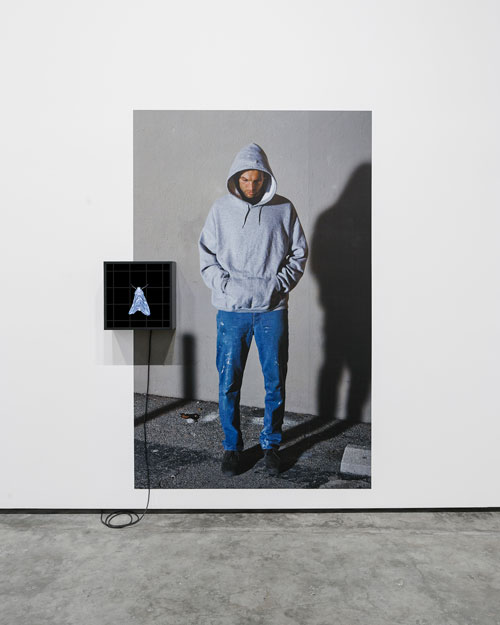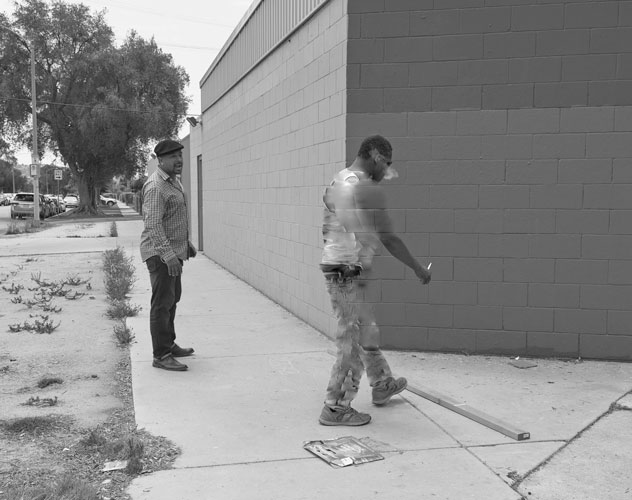With multimedia and hybrid disciplines on the rise, photographers, and artists who incorporate photographic materials and techniques into their work, continue to find ways to step further outside the boxes of camera and frame. Los Angeles–based Owen Kydd, who has received critical acclaim for his durational photographs—images that stretch the definitions of photography and video, as they hang on the wall with the barest hints of perceptible movement—recently presented “Time Image,” a series of site-specific wall-mounted works at Casemore Kirkeby Gallery in San Francisco.
Located in the new Minnesota Street Project space in San Francisco’s Dogpatch district, the gallery is a project launched by Steven Kirkeby, of Smith Anderson North, and Julie Casemore, formerly of Stephen Wirtz. Referencing the tradition of ponderous, monumentally-scaled photography, Kydd presented several large site-specific photo murals on self-adhesive vinyl, interspersed with a number of smaller durational photographs.
Moth (2015) offers a larger than life-sized photo on vinyl of a young man in blue jeans and a gray hoodie; hugging tightly, the vinyl flattens out to become one with the wall, while a small display box housing a video of a blue-gray moth protrudes eight inches at around the height of the figure’s waist. His jeans are splattered with white paint, suggesting that he is an artist. With a coating of stubble, his face is downcast; his head is sunk deeply in shadow. Moth evokes paintings of saints and monks, particularly Zurbarán’s Saint Francis of Assisi (1640), lending the work a religious feel. A diffused shadow falls behind the figure, illusionistically projecting it from its hyper-flattened space on the vinyl into the volume of the room. One senses in this juxtaposition of man and moth a memento mori, Kydd musing on the transitory nature of life.
A pair of African-American men engage in dialogue in The Boss (2015), another photo mural depicting a staged street scene in his studio neighborhood in South LA. The figure on the left, wearing a button-down plaid shirt, black wingtips and a cap, and sporting an earring, is directing the one on the right. Clad in a wife-beater style t-shirt, jeans, shades and tennis shoes, the second figure exhales a dense cloud of smoke. They stand on a desolate corner where dirt and weeds meet cement, a crushed Bud Light box and a piece of lumber lying on the ground. The right figure, actually a blurry Photoshop composite of two separate images, is largely transparent. Here Kydd’s work seems more clearly related to the everyday street scenes of Jeff Wall, for whom he worked as a studio assistant for four years.
Kydd’s formally elegant yet curiously dry sensibility clearly reflects his obsession with the tension between the conjoined twins of photography and video. At the same time, he pays homage to pioneers of experimental film and video; no doubt Andy Warhol, with his interminable films of slumbering figures and motionless buildings, would feel a wry kinship with Kydd’s witty and challenging investigations—and their allusion to the rapidly shrinking attention span.



